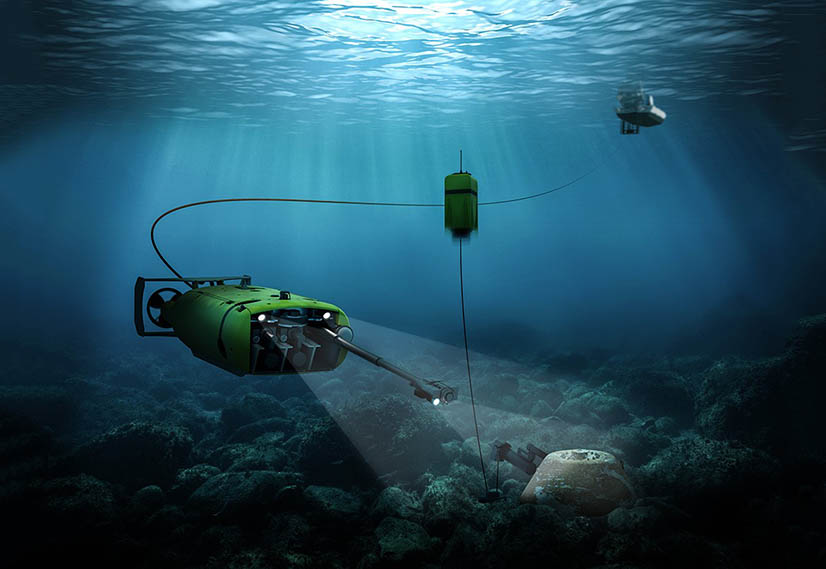
The emerging frontier for potential combat between nations is seemingly the oceanic floor. Powerful nations are scrambling for dominance in this field. The threat of destruction of seabed assets, causing enormous damage and huge economic impact by non-state actors is increasing exponentially.
“Seabed Warfare” refers to operations incorporating the sea floor, targeting cables (data and power), sensors and energy transmission, and extraction infrastructures and, it is defined as “operations to, from and across the ocean floor.”
In general, the aim of this warfare is to gain upper hand by destruction of infrastructures in place on the seabed (viz. power & telecom cables, natural resources extraction systems and/or even deployed weapon systems).
Many major navies, based on their national interests, have already evaluated this risk, shaped and devised a strategy to counter the growing menace of seabed warfare. Is the Indian Navy considering this emerging conflict domain a key looming threat now and in the future?
Is Indian Navy preparing and promulgating its seabed warfare strategy soon? Strengthening our efforts and resources to respond to this threat will surely prove to be vital for our future energy, sea resources and data & communication security, essential for an unhindered economic growth.
Seabed Warfare refers to operations incorporating the sea floor, targeting cables, sensors and energy transmission, and extraction infrastructures and is defined as – operations to, from and across the ocean floor
India needs to take lessons from seabed warfare developments in Europe and other regions diligently as an indication to potential proliferation in the Indian Ocean Region and the Indian Navy must prepare well to tackle this warfare effectively.
Popular Cases of Seabed Warfare Incidents
At the outset of WW I, Britain had severed five German cables laid across the English Channel, which enabled them to intercept the Zimmerman telegram. The US-CIA Operation ‘Ivy Bells’ used highly specialised submarines during the height of Cold War for wiretapping Soviet undersea communication cables in the Barents Sea and the Sea of Okhotsk to extract crucial intelligence. The USSR also used its undersea assets near US coasts to do the same.
In the decades since then, advent of modern technologies has increased manifold, the densities of undersea pipelines, optical fibres, and power cables which traverse the oceans between nations and continents alike, allowing data transfer in telecommunications and for distribution of oil and gas.
Recently, the sabotage of the Nord Stream 1 and Nord Stream 2 gas pipelines in September 2022 (three explosions were reported which destroyed three of the four pipelines running from Russia to Germany) has indicated a return to the past, in which seabed infrastructure were targets for military operations. Fingers were pointed at Russia amid escalating tensions with Europe over the Ukraine war.
The Transforming Landscape of Warfare
Seabed, or the oceanic floor, was once considered a relatively safe and secure domain. However, it has increasingly become a ‘high stake battleground’ as seabed warfare capable submarines, technologically advanced manned/unmanned Submersibles, Remotely Operated Vehicles (ROVs) and Unmanned Underwater Vehicles (UUVs), remotely operable mines etc. are highly capable of disrupting undersea communication cables and pipelines, sabotaging marine offshore and seabed infrastructures and chocking Sea Lines Of Communications (SLOCs) or energy trade routes.
India needs to take lessons from seabed warfare developments in Europe and other regions diligently as an indication to counter potential proliferation in the Indian Ocean Region and the Indian Navy must prepare well to tackle this warfare effectively
Today, there are approximately 1.4 million kilometres of undersea trans-oceanic cables crisscrossing the globe, transmitting 97% of global digital, voice and data communications, the disruption of which would wreak havoc on everything from financial to military operations.
Modern navies and coastal forces face a daunting challenge of safeguarding thousands of miles of pipelines and cables, as well as multitude of oil, gas, seabed natural resources, scientific, research and military seabed outposts. India has 95% of trade by volume and 70% by value via the seas.
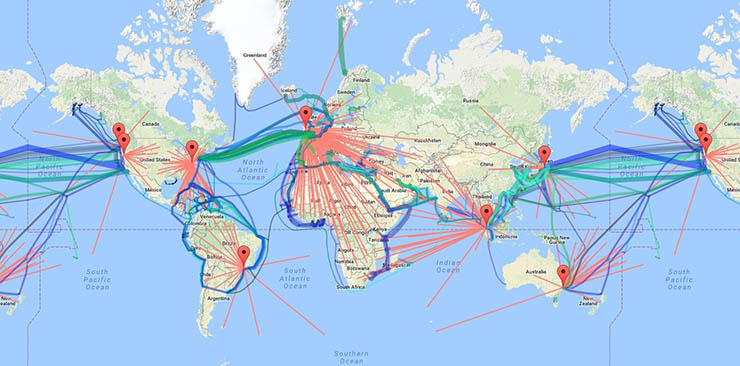
Considerable importance is being accorded to protection of these assets by user nations, which means strengthening their undersea surveillance, detection and warfare capabilities, investing in expensive, capable scientific technologies, deep diving spy submersibles and submarines with special abilities to deploy mini-subs and drones using underwater cameras and hi-tech sonars.
Navies of USA, UK, France, Russia and China have already announced their seabed strategies. Navies as well as non-state actors know the pressure points related to “economics of sustenance of war’ and that covert seabed warfare can bring about tremendous advantages.
Threats Posed by Seabed Warfare
Seabed warfare poses both conventional and unconventional threats. The common threats can be posed by the following:-
- Submarine Missions:- Special submarine reconnaissance missions, surface attacks on mobile or stationary seagoing assets or platforms, launch and/or recovery of submersibles/ROVs to disrupt services, laying self-propelled timed weapons, intelligent mines or explosive devices as well as launching clandestine operations,
- UUVs Missions:- Deploying UUVs for underwater attacks, deploying weapons / mines / explosives, reconnaissance and intelligence gathering missions etc.
- Sabotage Missions:- Destroying undersea infrastructure by using divers, ROV’s / manned submersibles, or by remotely laid explosives/ devices etc.
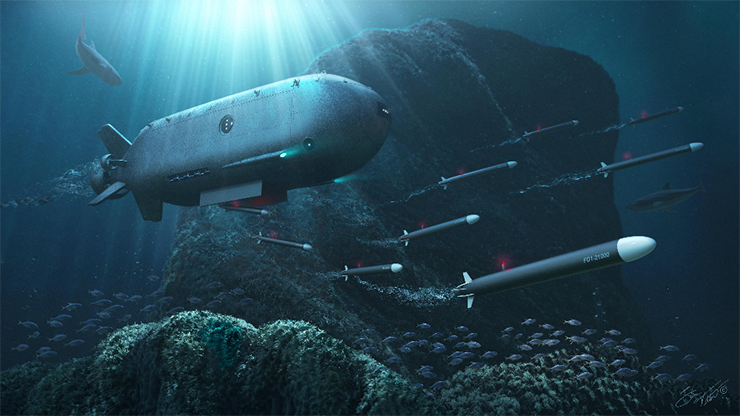
In order to address these emerging threats and challenges, new strategies, doctrines, advanced technologies, systems and modern platforms must be developed and deployed for ensuring credible seabed defence.
Initiatives by Major Navies
More recently, many navies have been quite concerned about the emerging risks & threats of seabed warfare. Actions taken by few navies are enumerated in brief.
United States Navy (USN): The USN has announced building the most expensive spy submarine ever, a $5.1 billion high-tech spy submarine filled with robots and divers that would patrol the deepest reaches of the ocean and deploy mini-subs and drones that can battle hostile forces while remaining dived very deep.
The USN Undersea Warfare Directorate has indicated that by 2025, USN hopes to have its UUVs, electromagnetic manoeuvre warfare and non-lethal sea control and seabed warfare systems operational and deployed.
Modern navies and coastal forces face a daunting challenge of safeguarding thousands of miles of pipelines and cables, as well as multitude of oil, gas, seabed natural resources, scientific, research and military seabed outposts
Another vehicle “Snakehead”, or “Large Displacement Unmanned Undersea Vehicle” (LDUUV) which has higher payload, greater endurance and can go deeper than other vehicles, is also being tested.
With wars in the Middle East, Asia and Europe and conflicts occurring in other regions, and as the biggest naval power in the world, USN’s Undersea Warfare Directorate is well focused on augmenting its special assets as part of its seabed warfare strategy.
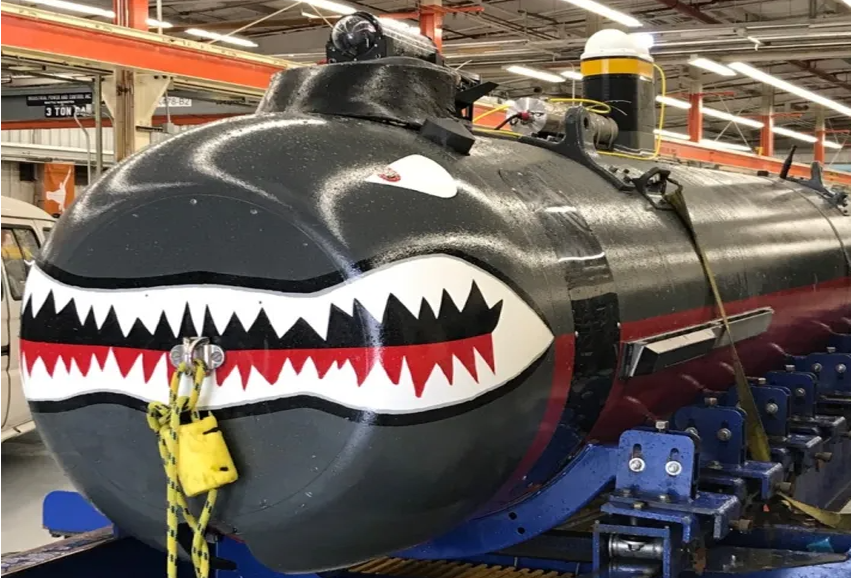
British Royal Navy (RN): Against a backdrop of increasing concerns about the growing seabed warfare risk and increasing high-level naval focus on building critical underwater infrastructure warfare (CUIW) capabilities, in 2021 the RN announced developing new Multi-Role Ocean Surveillance Ship (MROS) to safeguard national seabed / undersea infrastructure and the first of its class RFA Proteus is already in operation.
Conceptual changes are envisaged for the follow-on MROSs. Britain has also established a strategic partnership with Norway to “counter shared threats in the undersea domain” including threats to undersea infrastructure. RN has ordered a crewless submarine CETUS in December 2022 and is developing AUVs to detect underwater mines with France.
UK voiced its concerns about Russia’s seabed activities and the stepped-up Russian submarine operations (suspected to be mapping undersea cables on European shores) especially after damage to Nord Stream gas pipelines in 2022.
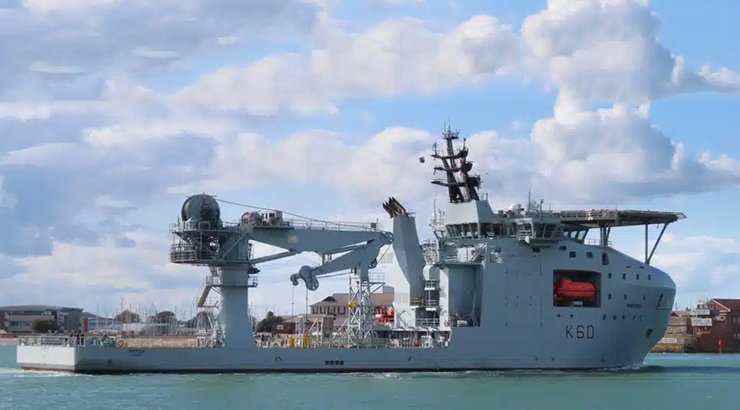
French Navy (FN): French Navy is leading discussions on the issues involved, including the challenges these developments pose to international maritime law, and the difficulties in both detecting and attributing damaging activity in this domain.
With significant economic stake possessing the world’s second largest Exclusive Economic Zone (EEZ). More than 50 of the world’s main submarine cables currently in operation – over 10% of the global total – run to France and its overseas territories.
France has promulgated its seabed warfare strategy document, which suggests that the seabed should be considered a new domain, similar to cyber and outer space. The strategy document outlines how to safeguard the French forces’ ability to secure their freedom of action in an increasingly contested environment, watch over the country’s underwater infrastructure and key resources, as well as defend the country’s undersea military and industrial interests.
Its key aspects focus on improving the country’s knowledge of the seabed, better monitoring of the underwater domain and securing its ability to act under the surface by augmenting resources. France has established specific departments and appointments in the Navy headed by a two star Admiral to handle this emerging domain swiftly.
With wars in the Middle East, Asia and Europe and conflicts occurring in other regions, and as the biggest naval power in the world, US Navy’s Undersea Warfare Directorate is well focused on augmenting its special assets as part of its seabed warfare strategy
France aims to develop at least one ROV and one autonomous uninhabited vehicle, able to operate down to 6,000 metres by 2025. Others include new generation hydrographic vessels with remote off-board systems and mine-warfare capabilities with new systems incorporating AUV/ROV platforms.
Russian Navy (RusN): Russian Navy operates a fleet of special mission subs for seabed warfare and espionage and is expanding its capability further. Russia’s fleet includes two massive submarine mother ships, with each carrying one or two deep diving submersibles.
These can be employed for covert seabed missions, including wreck plundering. The largest of these is BS-64, a stretched DELTA-IV-class submarine, which is being augmented by an even larger mother ship Belgorod (bigger and heavier than Delta and second only to the 30,000-ton Typhoon class).
These submarines are operated for the Main Directorate of Deep Sea Research and work on undersea communications and sensor networks, hydrocarbon exploitation, submarine rescue and investigating wreckage.
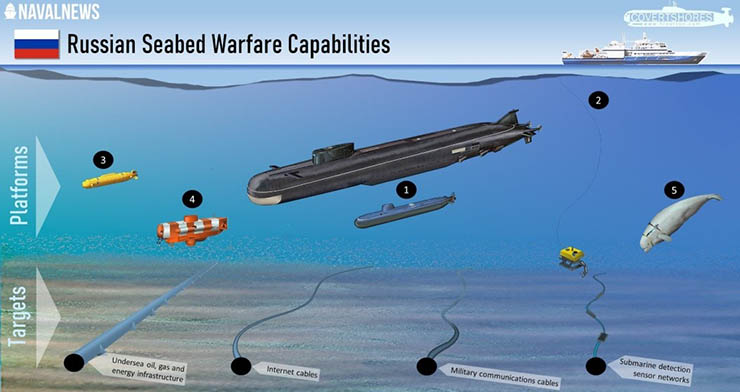
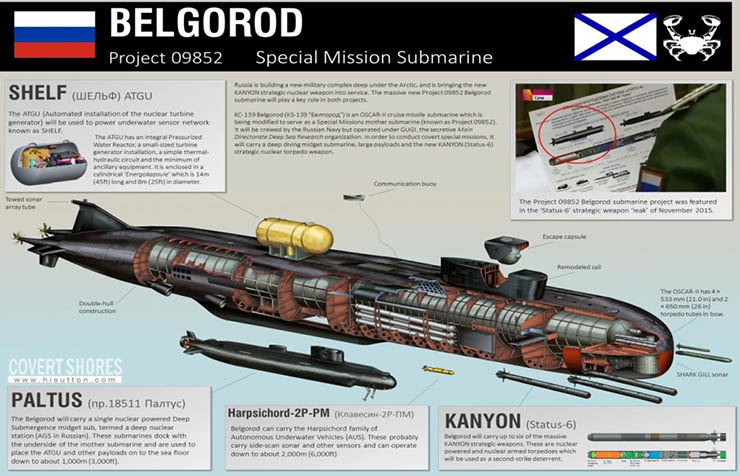
In addition to the submarines, specially-equipped surface vessels (popularly dubbed as spy ships) and equipped with a hangar for extremely deep-diving crewed submersibles and multiple ROVs are also operated by Russia. These ships have been found near international undersea cables, downed aircrafts of major navies, shipwrecks and near important undersea pipelines.
In general, Russian assets are capable of being utilised in the placement of acoustic sensors, surveying wreckage at the sea floor to glean intelligence, and tapping undersea cables etc. It holds many highly capable underwater assets and technologically advanced systems, drones and remote vehicles to undertake sub-sea operations.
The Ukraine war has also demonstrated numerous seabed warfare tactics adopted by the Russians for strategic advantages. In the Baltic Sea in 2015, Russia probably interfered with the completion of the SweLit underground power cable and more recently the Nord pipelines. The Russian government accords high priority to seabed warfare as is evident from the secretive expansion of its fleet assets in this domain.
Russian Navy operates a fleet of special mission subs for seabed warfare and espionage and is expanding its capability further, its fleet includes two massive submarine mother ships, and each carry one or two deep diving submersibles
Peoples Liberation Army Navy (PLAN): PLAN considers seabed warfare as a new kind of hybrid armed conflict that targets ocean-floor infrastructure like under-sea power and telecommunication cables, including natural resource extraction & transportation systems. It is emerging as an important component of Chinese naval operations to win future wars.
China’s deep-sea policy was enunciated by the Communist regime’s Five-Year Plan (2016-2020) for scientific innovation, which considers deep-sea technology to be a strategic high technology that serves national security. Building a real-time ocean surveillance system has become a national project of highest importance in Beijing’s national planning documents.
Consequently, Chinese Navy has ordered highly capable undersea drones and underwater vehicles and modernising its undersea fleet to exploit seabed warfare opportunities.
Chinese navy is already using the world’s first Artificial Intelligence-operated drone carrier, an unmanned maritime mother ship Zhu Hai Yun (with top speed of 18 knots) that is being used for maritime research, intelligence-gathering and even potentially repelling enemy drone swarms.
Its AI operating system allows it to carry 50 flying, surface and subsurface drones that can launch and recover autonomously and can be used for data collection/disruption. Weighing 3.5 tons, China’s largest AUV so far is the Haishen 6000 (Poseidon 6000), a 25 foot-long prototype.
Capable of diving to depths of 6,000 meters and is equipped with “multiple detection devices (an ultra-short baseline positioning system, an aircraft black box search sonar array, deep-sea side scanning sonar, an underwater camera, and forward-looking sonar).
Neither the HSU001 nor the Haishen 6000 appear to be outfitted with mine-laying rails or other weapon systems as of now, but further advances in large AUV models and battery life could permit them to carry such payloads.
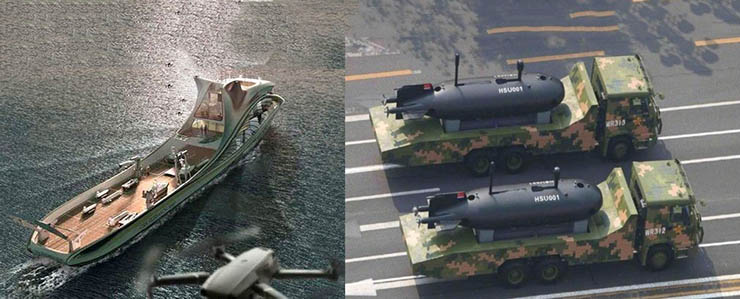
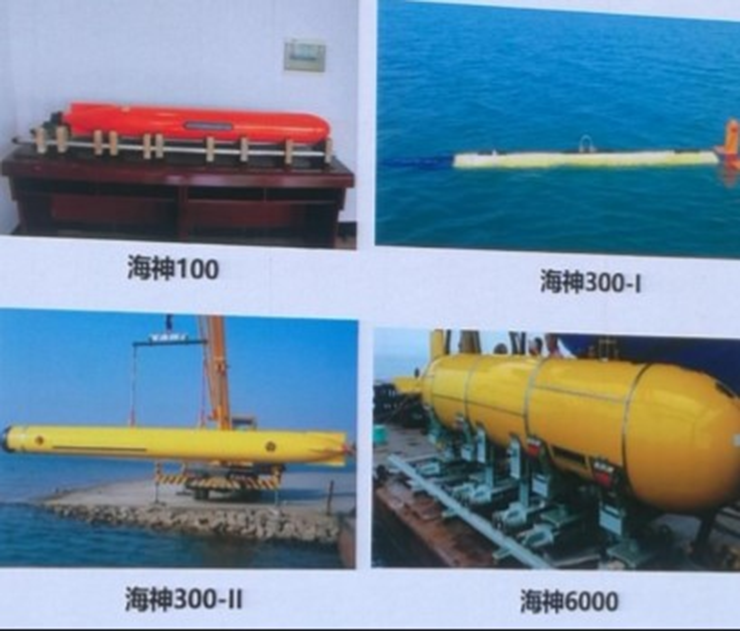
Seabed Warfare Implications for India and Status of the Indian Navy
It is only correct to expect that the warring states or the inimical actors would, sooner or later bring the seabed warfare to IOR, since this region is a hub of world’s largest energy trade, communications, internet and business applications.
Disruptions in undersea pipelines and to the data cables, conduits and fibre optic cables in IOR would adversely disrupt trade apart from causing financial crisis in India and in IOR nations. India holds a key position and strategic location in the IOR and being the most credible naval power in the region, it is expected to tackle seabed vulnerabilities and attacks for its national and regional interests.
The big question is how much is the Indian Navy prepared for Seabed Warfare? Is the undersea warfare department actively pursuing projects to augment their arsenal? Is IN’s Maritime Domain Awareness (MDA) network also as efficient as its Undersea Domain Awareness (UDA) aspects. Probably, there are no active debates / deliberations in the open domain on the urgency of preparedness and strategy of IN concerning seabed warfare in particular.
Chinese Navy is already using the world’s first Artificial Intelligence-operated drone carrier, an unmanned maritime mother ship Zhu Hai Yun for maritime research, intelligence-gathering and even potentially repelling enemy drone swarms
The Ministry of Defence (MoD) had initiated a preliminary procedure to acquire AUVs or underwater drones with dual observation and strike capabilities in June 2022. The Defence Research and Development Organisation (DRDO) is also attempting to “improve submarine situational awareness” and real-time imagery.
India’s Deep Ocean Mission of sending Matsya Yaan to 6,000 meters is underway and IN, ISRO, L&T, DRDO and many other organisations are involved in it. The IN has two DSRV’s purely for Submarine rescue missions. It has a Diving Support Vessel (DSV) INS Nireekshak, which also functions as the Submarine Rescue Vessel (SRV).
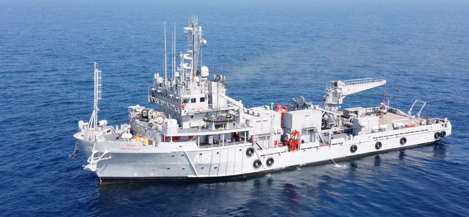
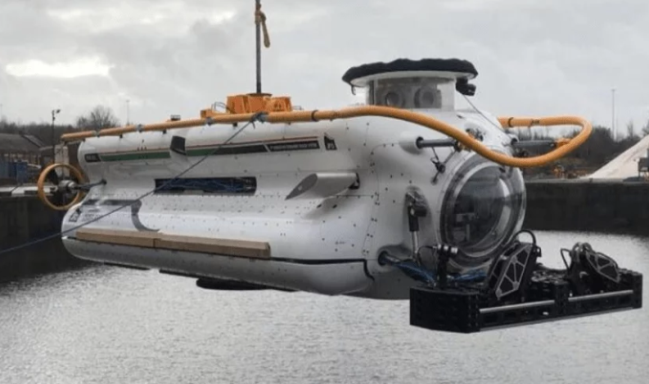
However, the assets available are quite inadequate to deal with the looming threat. Apparently, there is a good need to give high impetus to special assets for seabed warfare.
Indian Navy needs to have specialised fleet ships (AUV/ROV capable) modified submarines (ROV/DSRV/AUV) compatible for various operations, and independent submersibles (manned, capable of good payload and deep diving) and UUVs/LDUUVs/underwater drones for safeguarding India’s interests and as a counter to seabed warfare attacks. Much needs to be done and IN must take lead in this direction.
Recommendations
The following aspects are recommended for the Indian Navy to handle aspects related to increase its seabed warfare capabilties:-
- Formulate and promulgate a comprehensive Seabed Warfare Strategy Doctrine.
- Create Seabed warfare Department in its IHQ/ Command Headquarters, functioning under a two star Admiral. The departments will be responsible for active inter-services/inter-government agencies liaison in respective areas for information exchange and actions related to seabed warfare.
- Accelerate procurement of advanced undersea technologies and assets comprising mini-subs, submersibles, ROVs / AUVs / armed, unarmed UUVs/LDUUVs, autonomous drones and intelligence / information gathering and monitoring systems and sensors.
- Create awareness and deliberations on emerging trends and technologies affecting seabed warfare.
- Establish good infrastructure for training of personnel in various aspects of UDA and seabed warfare and create a pool of well-trained personnel.
- Procure new specialised submarines and/or modify few existing submarines to carry mini-subs/ drones in order to undertake special missions tailored for seabed warfare.
- India should take lead in IOR and develop partnerships with likeminded nations to create a robust and reliable strategic response to seabed warfare risks.
It would not be wrong to conclude that the Ukraine war alone has amply demonstrated that seabed infrastructure is a legitimate wartime target for state and non-state actors alike.
While this warfare is not a new phenomenon, however, the scale of new seabed infrastructure, and modern civilisation’s unparalleled reliance on commerce, trade, energy and communication networks, means the threat is real and emergent and consequences of asset disruption or destruction are very severe.
India Navy needs to publish its Seabed Warfare Doctrine or a strategy document and create necessary command and control systems in the country to handle the seabed warfare in the future
India needs to watch seabed warfare developments in Europe and other regions diligently, to counter any potential proliferation in the IOR. The seabed domain deserves close attention by the government, the Indian Navy, Indian maritime organisations and intelligence agencies.
GoI needs to publish its Seabed Warfare Doctrine or a strategy document and create necessary command and control systems in the country to handle the seabed warfare in the future.
The changing nature of traditional and asymmetric warfare, a 7,516 kms coastline, millions of sq. kms of vast EEZ, and valuable assets in its coastal zones and high seas makes it imperative that the Indian Navy evaluates this looming seabed warfare threat appropriately and prepares itself adequately to meet them in the future. As a regional power India must take lead and coordinate with IOR nations to secure Indian Ocean’s seabed and critical infrastructure.
While it is understood that the seabed warfare is extremely difficult to defend against, and presently no nation is adequately equipped or prepared to fully defend its seabed. However, India, and particularly the Indian Navy must make a strong push and take it forward expeditiously.
-The writer is a former Indian Navy Submarine Officer. Commissioned in 1991 (10+2 X First Course), he is an alumnus of Naval Academy, Goa and DSCSC Mirpur, Dhaka, Bangladesh. He served on Kilo Class Submarines, Commanded INS Sindhurakshak and is a specialist in Anti-Submarine Warfare and a deep sea diver. He has been Directing Staff of the prestigious DSSC, Wellington, Tamil Nadu and instructor at the Submarine Training Centre, INS Satavahana, Visakhapatnam. The views expressed in the paper are personal. He can be reached at sumit12in@gmail.com.








